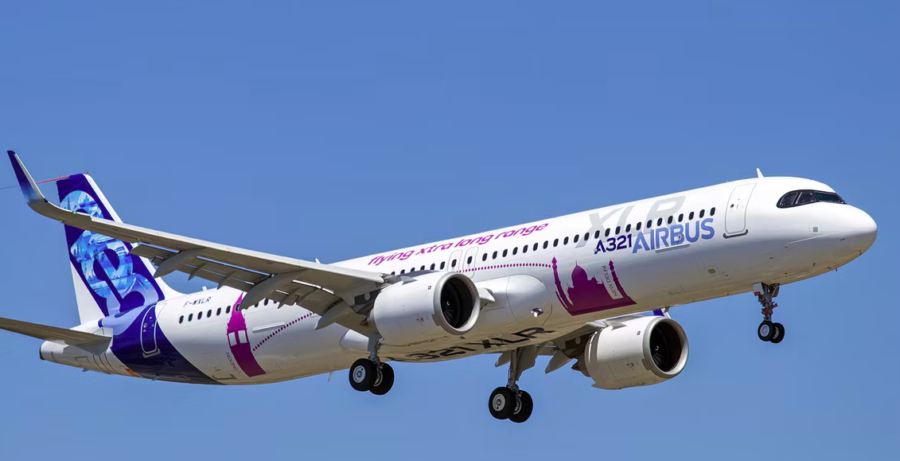Key Takeaways from the 2024 Farnborough Airshow

The 2024 Farnborough Airshow is concluding, and the event, particularly from a commercial airline perspective, fell short of previous years’ energy and attendance. Airbus, ATR, and Boeing collectively secured 286 orders, including firm commitments and options, with a significant portion coming from Asian and Middle Eastern airlines.
Despite Boeing starting the event with a significant number of announcements with 118 orders and options, Airbus caught up and surpassed its main rival by the end of the show with 164 orders and options. Meanwhile, ATR and De Havilland Canada secured orders for their aircraft, but Embraer did not receive any orders during the event.
Compared to past shows and even the 2023 Paris Airshow, Farnborough 2024 lacked vitality and numbers. As of Wednesday, the Farnborough organizers reported 74,789 attendees, 1,262 exhibitors, 27 international pavilions, and 250 civil, military, and space delegations. In stark contrast, the 2023 Paris Airshow saw 210,000 trade visitors and 2,453 exhibitors. Additionally, there was a noticeable lack of airliners in both static and flying displays at Farnborough.
Aircraft Orders and Announcements
This year’s Farnborough show saw aircraft commitments covering 191 aircraft, with 124 firm orders. This is a significant drop compared to the 374 aircraft commitments at the same stage of the 2022 show. Many of the airline order announcements at this show were not new; they had been previously declared or were existing Letters of Intent (LoIs) or Memoranda of Understanding (MoUs) confirmed at Farnborough.
Several airlines chose not to attend the show to make their order or confirmation announcements, opting instead to issue press releases during the same week. The airliner order numbers were notably low, with orders in the one- or two-digit range compared to the multiple hundreds seen at previous Farnborough shows and the 2023 Paris Airshow.
Post-Pandemic Airline Growth
Airlines are still experiencing growth post-pandemic. Many have already placed orders for future narrowbodies and widebodies, and their primary concern now is ensuring these orders are fulfilled on time. There was little motivation to travel to southern England to finalize deals for a few more aircraft.
Boeing’s Low-Key Presence
Given the ongoing production and quality control issues at Boeing Commercial Airplanes (BCA), under heightened FAA supervision, BCA had announced a low-key presence at Farnborough before the show. Boeing did not display any Boeing-liveried airliners at the show. This subdued approach seemed to influence other manufacturers on the commercial side, who also opted for a lower-key presence and reduced costs. Airbus, while present, was less showy than at its home country show in Paris.
Regional Manufacturers and Engine Suppliers
Regional airliner manufacturers and engine suppliers also had a subdued presence. They avoided making much noise about Boeing’s situation, as many of them still have their own supply chain and production challenges to resolve. Instead, they likely appreciated the opportunity to scale back their presence at a major airshow, saving time and money for other priorities like fulfilling order backlogs.
Airshow Dynamics and Future Prospects
The COVID pandemic led to the cancellation of the Paris and Farnborough Airshows, revealing that, for the commercial airline sector, these events were not missed for doing business. When airlines were ready to make deals, they did so without the need for an airshow.
The gap years provided an opportunity to rethink and restructure the major European shows, but this was not taken. The rivalry between Farnborough and Paris organizers continues, maintaining the annual ritual. This year’s show highlighted a potential shift for future airshows: they need to be shorter, easier to access, and more mindful of commercial decarbonization pressures. The logistical challenges of getting to Farnborough, including major rail transport issues on the first trade day, underscored the need for more efficient events.
Conclusion
Airshows like Farnborough still have a role in the aviation industry, but their format and focus may need to evolve. Shortening the duration to three trade days could align Farnborough and Paris with other major airshows in Dubai and Singapore, which are more regionally focused. Re-imagining the role of these shows could help them remain relevant and valuable in an industry increasingly focused on efficiency and sustainability.
Summary of Orders:
- Korean Air 787-10 Order 20, Options 10
- Korean Air 777-9 Order 20
- National Air Cargo 777F Order 4
- Luxair 737-10 Order 2, Options 2
- Japan Airlines 787-9 Order 10, Options 10
- Japan Airlines A350-900 Order 20
- Japan Airlines A321neo Order 11
- Druk Air A320neo Order 3
- Druk Air A321XLR Order 2
- VietJet A330neo Order 20
- Virgin Atlantic A330neo Order 7
- Macquaire AirFinance 737-8 Order 20
- Qatar Airways 777-9 Order 20
- Berniq Airways A320neo Order 6
- Air Tahiti ATR 72-600 Order 4
- flynas A320neo Order 75
- flynas A330neo Order 15
- Abra Group (parent of Avianca and GOL) A350 Order 5
Related news: https://suspicious-zhukovsky.67-21-117-18.plesk.page/?s=Farnborough+Airshow
Stay updated with the latest developments in global aviation, aircraft news, and airline business by following our Aviation News section.
